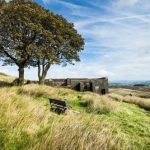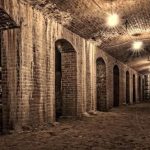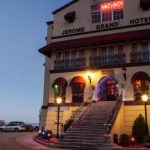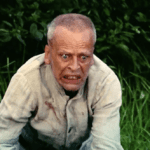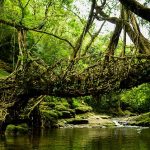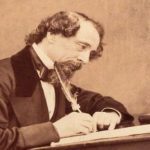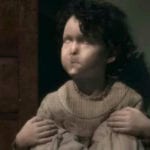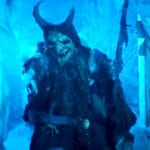 Technology
Technology  Technology
Technology  Humans
Humans 10 Everyday Human Behaviors That Are Actually Survival Instincts
 Animals
Animals 10 Animals That Humiliated and Harmed Historical Leaders
 History
History 10 Most Influential Protests in Modern History
 Creepy
Creepy 10 More Representations of Death from Myth, Legend, and Folktale
 Technology
Technology 10 Scientific Breakthroughs of 2025 That’ll Change Everything
 Our World
Our World 10 Ways Icelandic Culture Makes Other Countries Look Boring
 Misconceptions
Misconceptions 10 Common Misconceptions About the Victorian Era
 Mysteries
Mysteries 10 Strange Unexplained Mysteries of 2025
 Miscellaneous
Miscellaneous 10 of History’s Most Bell-Ringing Finishing Moves
 Technology
Technology Top 10 Everyday Tech Buzzwords That Hide a Darker Past
 Humans
Humans 10 Everyday Human Behaviors That Are Actually Survival Instincts
 Animals
Animals 10 Animals That Humiliated and Harmed Historical Leaders
Who's Behind Listverse?

Jamie Frater
Head Editor
Jamie founded Listverse due to an insatiable desire to share fascinating, obscure, and bizarre facts. He has been a guest speaker on numerous national radio and television stations and is a five time published author.
More About Us History
History 10 Most Influential Protests in Modern History
 Creepy
Creepy 10 More Representations of Death from Myth, Legend, and Folktale
 Technology
Technology 10 Scientific Breakthroughs of 2025 That’ll Change Everything
 Our World
Our World 10 Ways Icelandic Culture Makes Other Countries Look Boring
 Misconceptions
Misconceptions 10 Common Misconceptions About the Victorian Era
 Mysteries
Mysteries 10 Strange Unexplained Mysteries of 2025
 Miscellaneous
Miscellaneous 10 of History’s Most Bell-Ringing Finishing Moves
10 Locations from Horror Movies That You Can Actually Visit
It’s not uncommon for film buffs to make pilgrimages to notable filming locations from their favorite flicks, from the Ghostbusters’ fire station in New York City to the Rocky steps in Philadelphia. But this list is for horror film enthusiasts. We’ve rounded up 10 of the most iconic places from scary movies that can actually be visited. Thankfully, the spooky onscreen monsters and ghosts should be absent.
Related: Top 10 Incredible Opening Scenes in Horror Movies
10 Lord Summerisle’s Castle from The Wicker Man (1973)
Robin Hardy’s folk horror The Wicker Man is set on the fictional Scottish island of Summerisle and was filmed in a few small villages along the west coast of Scotland. Culzean Castle stands in as the exterior for the impressive castle residence of Lord Summerisle (Christopher Lee). The grand turrets and battlements of Culzean are built on a cliff dramatically overlooking the sea. The extensive grounds can be toured year-round, and visitors can take a peek inside from April to the end of October.
However, the interior of Culzean won’t be familiar to Wicker Man fans, as those scenes were actually filmed about an hour away at Lochinch Castle, which can be found in the grounds of Castle Kennedy. Although Lochinch isn’t open to the public, Kennedy’s gardens are, and they happen to be another filming location for the movie. They were used for the May Day procession and for the scene where naked women dance and leap over the fire in the standing stone circle.[1]
9 The Cemetery from Night of the Living Dead (1868)
The landmark horror film Night of the Living Dead starts in a cemetery, with siblings Johnny (Russell Streiner) and Barbara (Judith O’Dea) visiting their father’s grave. It’s here that Johnny teases a frightened Barbara with the well-known line, “They’re coming to get you, Barbara!” This scene was shot in Evans City Cemetery, Pennsylvania, around 30 miles (48 kilometers) north of Pittsburgh, where director George A. Romero lived for most of his life.
The gravestone used for Johnny and Barbara’s father’s grave actually belongs to Grace and George H. Cole. The tall column grave marker that Barbara grips in fear while watching her brother being killed by a zombie belongs to Nicholas Kramer. Each year, in October, an event called The Living Dead Weekend is hosted in Evans City by The Living Dead Museum. The cemetery is included on the filming locations tour, and in October 2023, it will even be used to host a meet & greet brunch with some of the actors, including O’Dea and Streiner.[2]
8 Count Orlok’s Castle from Nosferatu (1922)
F.W. Murnau’s iconic 1922 silent film Nosferatu is set in Transylvania, but it was filmed in Germany and Slovakia. The scenic German cities of Lübeck and Wismar stood in as the town that Thomas Hutter (Gustav von Wangenheim) passes through on his way to Count Orlok’s (Max Schreck) castle. The spooky 13th-century Orava Castle in Slovakia, which is perched imposingly on a tall craggy outcropping, was used as the Count’s home and can be toured year-round. Slovakia’s High Tatra Mountains and Vah River also made it into the film.
Orava Castle made such a big impact as a vampire’s lair that it even got to play the role again: It’s featured as Dracula’s abode in Mark Gatiss and Steven Moffat’s 2020 three-episode Dracula TV show.[3]
7 The Steps from The Exorcist (1973)
At the end of The Exorcist, Father Damien Karras (Jason Miller) is possessed by the demon and leaps headfirst out of a window. He tumbles down the steep stone staircase below and then dies at the bottom. Filming took place in the Washington, D.C., neighborhood of Georgetown, but some movie magic was needed to get this specific sequence. The MacNeil’s house was actually set back from the steps, so a false front was built so that the angle would be right for stuntman Chuck Waters to take the dive.
Special effects supervisor Marcel Vercoutere lined each step with a half-inch thick layer of rubber to slightly cushion Waters’s fall, which he had to perform twice. Apparently, Georgetown University students sold tickets for $5 to people wanting to watch the bone-rattling stunt from the surrounding rooftops.
So many fans have flocked to the steps over the years that in 2015, an official plaque was added. Mayor Muriel Bowser commented, “It is important that all the tourists know exactly what these steps mean to D.C. history, and they are indeed an icon in our town.”[4]
6 The Overlook Hotel from The Shining (1980)
Stephen King was inspired to write The Shining (1977) after staying at The Stanley Hotel in Colorado when it was eerily deserted at the very end of the season. For Stanley Kubrick’s 1980 film adaptation, The Overlook was a composite of two hotels, both of which were designed by architect Gilbert Stanley Underwood.
Exterior shots were filmed at The Timberline Lodge, which is located on Oregon’s Mount Hood. Interior shots were filmed on sound stages at Elstree Studios in England, but the sets were designed to look like The Ahwahnee Hotel in Yosemite National Park, California. The Overlook’s grand main hall and staircase bear a particularly close resemblance to The Ahwahnee.
Production was actually halted for a period of time because of a fire consuming a few of the sound stages. The set still photographer, Murray Close, explained that it damaged “the stage that had the set of the Overlook Hotel with the lounge set where Jack typed and he chased Shelley Duvall around with a baseball bat.” The cause of the fire was never discovered, but Close captured a rare picture of Kubrick laughing amid the wreckage while he was taking photos for insurance purposes.[5]
5 Louis’s Plantation from Interview with the Vampire
Interview with the Vampire (1994), based on Anne Rice’s 1976 novel of the same name, is partially set at a grand plantation outside New Orleans, which is owned by Louis (Brad Pitt). Similar to The Overlook Hotel in The Shining, the plantation was created by filming different buildings for exterior and interior shots. Both plantations can be found along the Mississippi River, a little over 30 miles (48 kilometers) apart.
Oak Alley Plantation, with its Greek-inspired columns, stands in as the exterior of Louis’s mansion, and its grounds were used for the graveyard and dock scenes. The plantation was also used as a filming location for Knight Rider and Days of Our Lives. Louis’s luxurious parlors and bedroom were filmed at Destrehan Plantation, the barn of which also appears in 12 Years a Slave (2013). Although visitors won’t find vampires at either location, the buildings do have dark histories, given their links to slavery.[6]
4 The Colonial Theatre from The Blob (1958)
When people think of The Blob, their minds usually turn to the scene where the titular Blob oozes into the Colonial Theatre from the screen, causing its patrons to run away in terror. This theater can be found in Phoenixville, Pennsylvania, and each year, it’s the center of Blobfest, a festival held in July to celebrate all things Blob. Along with movie screenings, costume contests, and a street fair, there is a re-enactment of the famous cinema fleeing scene.
Director Irvin Yeaworth was local to the area and, according to Drew Boardman, the events engagement manager for Blobfest, he “reached out to the people who were in charge of the theater and paid them a criminally low rate and was like ‘but trust me, it’ll make you iconic.’” Yeaworth was definitely proven right.
The diner across the street that some of the characters run into can also be visited. It’s actually located around 15 miles (24 kilometers) away, but there currently isn’t any Blob memorabilia inside.[7]
3 KAB Lighthouse from The Fog (1980)
The most iconic location in John Carpenter’s The Fog is undoubtedly the lighthouse on Spivey Point, where KAB radio DJ Stevie Wayne (Adrienne Barbeau) works. It’s from this little lighthouse that she warns the residents of Antonio Bay that a supernatural fog is rolling in. Point Reyes Lighthouse in California was used for the exterior shots of this atmospheric structure.
Visitors can walk the 308 steps down to the lighthouse, where they’ll also find a small visitor’s center that details the history of the building. Filming didn’t actually take place inside the lighthouse, though. Instead, a set designed to resemble its interior was built at Raleigh Studios in Hollywood. The nearby town of Point Reyes Station also provided Carpenter with exterior shots of the fictional Antonio Bay. He liked the visuals of the town so much that he even returned 15 years later when filming his remake of Village of the Damned (1995).[8]
2 The Gas Station from The Texas Chain Saw Massacre (1974)
Before all of the cannibalistic chaos begins in Tobe Hooper’s The Texas Chain Saw Massacre, our group of characters stop at a run-down gas station, which, according to its sign, also sells barbecue. Not only is this gas station still standing in Bastrop, Texas, but it’s also been converted into an actual barbecue restaurant called The Gas Station.
The building was bought by Roy and Lisa Rose (who are both fans of the film, of course) in 2014. They endeavored to make it as similar as possible to the movie while doing the renovations. There’s even a replica of the green van and ’70s-era gas pumps. “We just want it to be authentic, so when you go, you’re not disappointed,” says employee Ben Hughes. “If you’re going to do it, do it right.” There are also cabins to rent and a gift shop filled with movie merch.
Another horror movie gas station can be found in Province de Ouarzazate, Morocco. This station was built for the filming of Alexandre Aja’s 2006 remake of Wes Craven’s The Hills Have Eyes (1977). After filming, the set was left intact on the side of the highway, complete with old furniture and rusty cars.[9]
1 Camp Crystal Lake from Friday the 13th (1980)
The cast and crew of Friday the 13th headed to Camp No-Be-Bo-Sco (which stands for North Bergen Boy Scouts) in Hardwick, New Jersey, to film their bloody slasher flick. To this day, the camp is still actively used by the Boy Scouts of America. In 2011, official tours started being run, but they aren’t that frequent, so tickets sell out quickly. Cast and crew have even been known to occasionally make special appearances on the tours, including Adrienne King (who played final-girl Alice) and special effects makeup artist Tom Savini.
According to tour guides, the producers paid $25,000 to film at the site. This sum is even alluded to in the movie when a truck driver comments that the camp’s owners must have spent $25,000 to do it up. The tour covers most of the main locations in the film, including the cabins, generator shed, and bathrooms—all of which are sites of gory kills—and props are put out, including the all-important canoe on the lake. There’s also a gift shop filled with Jason Voorhees-related merch.
Blairstown Diner, which stood in for Crystal Lake Diner, can be found just a short drive away from Camp No-Be-Bo-Sco, although it has been remodeled since its onscreen appearance.[10]
